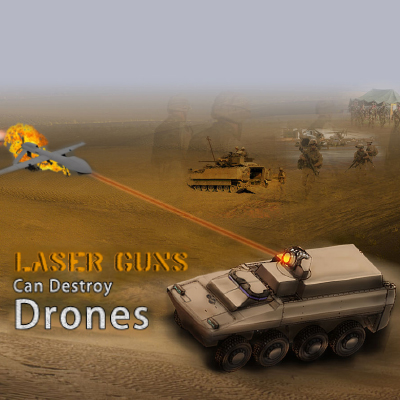Top 5 Trends Impacting the Defence Industry: Adapting to a Changing Landscape

Introduction
Amidst technological progress, geopolitical changes, and emerging threats, the defence sector, vital for national security, is experiencing a significant metamorphosis. In this swiftly changing arena, maintaining a leading edge is imperative for defence establishments globally. Presented here are key trends that are influencing the trajectory of the future within the defence industry.
Trends Impacting the Defence Industry:
1. Cybersecurity and Cyber Warfare: Safeguarding the Digital Battlefield
In the modern era, where technological advancements permeate every facet of defence operations, the significance of cybersecurity cannot be overstated. The rapid digitization of military systems and communication networks has given rise to a new battlefield – the digital realm. This has led to the emergence of a pressing concern: cyber threats and the necessity of robust cybersecurity measures.
The Rise of Cyber Threats: A New Dimension of Warfare
Cyber threats have evolved from mere nuisances to potent weapons capable of causing significant disruptions to defence infrastructure and operations. Adversaries, whether state-sponsored or independent hackers target military networks, critical infrastructure, and sensitive data. The motivation behind such attacks varies, ranging from espionage to disrupting military readiness or stealing advanced weapon designs.
The Necessity of Cybersecurity
In countering these cyber hazards, defence entities must accord paramount importance to cybersecurity as a fundamental element of their functioning. Resilient cybersecurity measures encompass multiple tiers of safeguarding, spanning from firewalls and intrusion detection systems to encryption protocols and secure communication pathways. Uninterrupted surveillance, threat evaluation, and immediate response capabilities are imperative to proactively tackle the ever-changing landscape of cyber threats.
Securing Military Networks and Data
Modern defence operations rely heavily on interconnected networks for communication, command and control, and data sharing. The vulnerability of these networks to cyber attacks necessitates stringent security protocols. Implementing strict access controls, regularly updating software and firmware, and ensuring the proper segregation of sensitive data are crucial steps in fortifying military networks.
Cyber Warfare: A Strategic Weapon
Beyond defence, cyber capabilities have extended into the realm of offensive operations. Nations are developing cyber warfare units capable of disrupting enemy communication systems, sabotaging critical infrastructure, or even causing economic chaos. The asymmetric nature of cyber warfare allows smaller nations to challenge more powerful adversaries, creating a new dynamic in global conflict.
Collaboration and Information Sharing
In the face of these challenges, international collaboration and information sharing play a pivotal role. Defence organizations, along with governments and cybersecurity firms, must collaborate to share threat intelligence, best practices, and innovative solutions. Cybersecurity exercises, where various entities simulate cyber attacks and responses, help identify weaknesses and test the effectiveness of defence measures.
2. Autonomous Systems and AI: Redefining Warfare
In the realm of modern warfare, a new paradigm is emerging, driven by the integration of autonomous systems and artificial intelligence (AI). The fusion of these technologies is reshaping how militaries operate and redefining the very nature of conflict.
The Rise of Autonomous Systems
Autonomous systems, including unmanned aerial vehicles (UAVs), unmanned ground vehicles (UGVs), and autonomous naval vessels, have become indispensable assets on the modern battlefield. These systems, often equipped with sensors and AI algorithms, can execute tasks with minimal human intervention. They range from reconnaissance and surveillance missions to more complex tasks like targeting and even combat engagement.
Enhanced Reconnaissance and Surveillance
Autonomous drones and other unmanned platforms have revolutionized reconnaissance and surveillance operations. Equipped with advanced sensors and AI capabilities, these systems can gather real-time intelligence, monitor hostile territories, and detect potential threats without putting human lives at risk.
Precision and Flexibility
One of the greatest advantages of autonomous systems is their ability to achieve unparalleled precision and flexibility in military operations. UAVs can carry out surgical strikes on high-value targets, while UGVs can navigate hazardous terrains and perform logistical tasks in environments too dangerous for human personnel.
AI's Role in Decision-Making
AI plays a critical role in autonomous systems by enabling them to make decisions based on real-time data analysis. Machine learning algorithms allow these systems to adapt to changing scenarios, recognize patterns, and even predict enemy movements. This predictive capability enhances the effectiveness of military operations.
Ethical and Legal Considerations
As autonomous systems and AI become more integrated, they present manifold advantages, yet they also give rise to ethical and legal inquiries. Employing AI in decision-making processes gives rise to accountability concerns, as machine-made choices might lack human discernment and compassion. Furthermore, deliberations over the utilization of lethal force by self-governing weaponry devoid of direct human oversight have incited global dialogues and demands for regulatory frameworks.
Human-Machine Collaboration
The future of warfare is not one of complete autonomy but rather human-machine collaboration. The unique abilities of humans, such as ethical reasoning and contextual understanding, complement the analytical capabilities of AI. Integrating humans into the loop ensures that critical decisions are made with a blend of human judgment and machine precision.
Redefining Military Training
Autonomous systems and AI are also transforming military training. Simulations that incorporate AI-controlled adversaries provide realistic scenarios for training, enhancing soldiers' preparedness for complex and dynamic battlefield situations.
3. Space Domain: A New Frontier for Defence
In the vast expanse beyond our planet's atmosphere lies a new frontier that is fundamentally transforming the defence industry: the space domain. As technological advancements soar to new heights, nations are increasingly recognizing the strategic importance of space, leading to a reimagining of defence strategies, technologies, and international norms.
The Space Imperative
Space has become a cornerstone of modern defence operations, offering capabilities that extend far beyond terrestrial boundaries. Satellites have evolved from mere communication tools to indispensable assets that provide essential services such as navigation, reconnaissance, weather forecasting, and intelligence gathering. The space domain now influences nearly every aspect of defence, from logistics to decision-making on the battlefield.
Satellite Communication and Global Connectivity
Satellite-based communication networks facilitate instant, secure, and global connectivity for defence operations. Whether it's coordinating troops in remote locations or relaying critical information in real-time, satellite communication has become the backbone of military command and control systems, enhancing the agility and efficiency of defence forces.
Precision Navigation and Geolocation
The Global Positioning System (GPS) and analogous satellite-dependent navigation systems have transformed military navigation and activities. Accurate geolocation capabilities empower troops to navigate unfamiliar terrains with precision, synchronize manoeuvres, and execute strikes with unparalleled accuracy. These technologies amplify situational awareness, reduce unintended consequences, and optimize the efficiency of military endeavours.
Surveillance and Reconnaissance from Above
Satellites equipped with advanced imaging and sensor technologies offer unparalleled surveillance and reconnaissance capabilities. They can monitor adversary movements, track the proliferation of weapons, and assess potential threats across vast expanses. The space-based vantage point allows defence organizations to gather critical intelligence without crossing borders or compromising the safety of personnel.
Challenges and Security Concerns
The militarization of space introduces a complex array of challenges. Space debris poses risks to operational satellites, while the development of anti-satellite capabilities raises concerns about the vulnerability of critical assets. The absence of comprehensive international regulations for space warfare complicates efforts to ensure responsible conduct and prevent the escalation of conflicts beyond Earth's atmosphere.
Rising Anti-Satellite Capabilities
The development of anti-satellite weapons underscores the potential vulnerabilities of space assets. Nations are investing in technologies that can disrupt or destroy satellites, threatening the continuity of communication, navigation, and surveillance systems. These capabilities have the potential to reshape the dynamics of modern warfare, emphasizing the importance of safeguarding space assets.
Cooperation and Diplomacy
Addressing the challenges of the space domain requires international cooperation and diplomacy. While treaties such as the Outer Space Treaty of 1967 establish the principles of peaceful use of space, evolving technologies demand updated agreements that account for modern security considerations. Collaborative efforts are essential to establish norms that prevent the weaponization of space and ensure the responsible use of space-based assets.
The Future of Defence in Orbit
As the space domain evolves, defence organizations must continuously innovate to secure their interests. Advancements in space-based sensors, defensive countermeasures, and satellite resiliency are crucial for maintaining operational capabilities. Moreover, fostering a global dialogue about responsible behaviour in space is imperative to prevent the escalation of conflicts into orbit.
4. Advanced Manufacturing: 3D Printing and Beyond
In the ever-evolving landscape of the defence industry, a revolutionary trend is shaping the way military equipment is conceptualized, designed, and produced: advanced manufacturing. At the forefront of this trend is 3D printing, a technology that transcends traditional manufacturing processes and opens doors to unprecedented flexibility, innovation, and efficiency.
The Power of Additive Manufacturing
Additive manufacturing, commonly known as 3D printing, introduces a paradigm shift by creating three-dimensional objects layer by layer. This departure from subtractive manufacturing, which involves removing material from a solid block, allows for intricate designs and customization that were previously inconceivable.
Swift Prototyping and Iteration
A noteworthy benefit of additive manufacturing lies in rapid prototyping. Within defence entities, the ability to promptly design and fabricate prototypes for new equipment facilitates expeditious testing, validation, and enhancement. This iterative methodology curtails development timelines, hastens innovation, and culminates in the deployment of superior-performing products to the field.
Tailored Customization and Intricacy
The unique capability of 3D printing lies in crafting intricate geometries and complex internal structures. In the realm of defence, this translates into the customization of equipment—be it lightweight elements, intricate sensor enclosures, or complete unmanned vehicles—to align precisely with operational needs. Such personalized adaptations augment performance, minimize weight, and refine functionality, culminating in defence systems that are both more efficient and effective.
On-Demand Production and Supply Chain Efficiency
3D printing's on-demand production capability addresses a persistent challenge in defence logistics – maintaining a steady supply of spare parts. With the ability to manufacture parts when and where needed, defence forces can reduce dependency on traditional supply chains, mitigate downtime, and extend the lifespan of the equipment.
Reducing Waste and Environmental Impact
Unlike traditional manufacturing, which generates significant waste through material removal, additive manufacturing generates minimal waste. The precision of 3D printing ensures that only the required material is used, reducing environmental impact and conserving resources.
Challenges and Considerations
While advanced manufacturing holds immense promise, it also presents challenges. Quality control, material selection, and certification processes are crucial to ensure that 3D-printed components meet stringent defence standards. Additionally, the potential for intellectual property theft and the need to secure digital designs and blueprints are ongoing concerns.
Innovation Beyond 3D Printing
While 3D printing is a cornerstone of advanced manufacturing, other technologies are also reshaping the landscape. Robotics, nanotechnology, and advanced materials are being explored to develop equipment that is not only lightweight and durable but also integrates enhanced functionalities like self-healing capabilities and adaptive camouflage.
Unveiling a Fresh Epoch of Adaptability and Nimbleness
The advent of advanced manufacturing heralds a novel era of adaptability and nimbleness within the defence sector. The capacity for swift design iterations, crafting tailor-made components, and on-demand equipment production empowers defence establishments to proactively address emerging threats and navigate evolving challenges.
5. Electromagnetic Spectrum Warfare: The Silent Battlefield
In the age of technology, warfare has expanded into a realm where battles are fought without a single shot fired – the electromagnetic spectrum. The invisible wavelengths that encompass radio waves, microwaves, infrared, and beyond have become the new arena for conflict and control, shaping a landscape known as electromagnetic spectrum warfare.
The Spectrum's Role in Modern Warfare
The electromagnetic spectrum serves as the foundation for modern communication, navigation, radar, and sensor systems. Defence organizations rely on these systems for intelligence gathering, surveillance, reconnaissance, and even weapon guidance. As a result, gaining control over the spectrum has become a pivotal objective in contemporary warfare.
Electronic Warfare and Spectrum Dominance
Electronic warfare (EW) involves the manipulation of the electromagnetic spectrum to disrupt, deceive, or degrade an adversary's communication, radar, and sensor capabilities. Spectrum dominance – the ability to control and exploit the electromagnetic spectrum – has evolved into a critical strategic advantage on the battlefield.
Disruption and Deception in the Electromagnetic Realm
Within the domain of electromagnetic spectrum warfare, disruption takes shape as jamming—a deliberate emission of interference aimed at disrupting enemy communications and radar systems. This tactic fractures the adversary's situational awareness, potentially sowing confusion and disorder on the battlefield. Conversely, spoofing entails transmitting counterfeit signals to confound and misdirect enemy sensors, fostering inaccurate assessments and decisions.
Synergy of Cyber and Electromagnetic Tactics
The fusion of cyber warfare and electronic warfare has birthed cyber-electromagnetic activities (CEMA). This strategy amalgamates the disruption prowess of electronic warfare with the covert tactics and cyber intrusion methods of cyber warfare. Leveraging weaknesses within enemy communication networks, CEMA aims to disrupt command hierarchies and impede adversary operations.
Securing the Spectrum
Given the critical nature of the electromagnetic spectrum, defence organizations are investing in technologies to secure their own systems while also countering adversary efforts. Advanced signal processing, cognitive radios, and dynamic spectrum management techniques enable more agile and adaptive use of the spectrum.
The Future of Warfare: Silent and Precise
Electromagnetic spectrum warfare underscores the shift towards precision and non-kinetic methods of conflict. Battles in this domain are not accompanied by the sounds of explosions but are characterized by the silence of disrupted communication and the uncertainty of compromised sensor readings.
Ethical and Strategic Considerations
As warfare moves into the realm of manipulating invisible waves, ethical and strategic considerations come to the fore. The unpredictability of electromagnetic spectrum warfare adds complexity to strategic planning, as its effects are not always immediately apparent. Balancing the strategic benefits with potential humanitarian and civilian implications is a challenge faced by defence policymakers.
Conclusion: Navigating Defence's Transformative Path
The defence industry faces a tech-driven evolution. Cybersecurity's importance transcends borders, while AI-driven autonomous systems reshape tactics. Space militarization emphasizes celestial security. Advanced manufacturing, like 3D printing, fuels innovation and agility, but quality and security challenges persist. Electromagnetic spectrum warfare introduces silent battles for communication dominance. Vigilance, cooperation, and ethical considerations are essential as defence adapts. Balancing technology's potential with ethical and strategic principles is paramount. The defence landscape's fluidity requires continuous adaptation for a safer, secure future.









